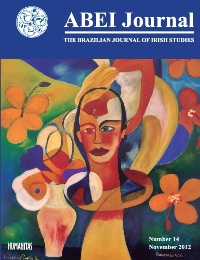“His heart against his ribs”: Embodied Tension in “The Dead”
DOI:
https://doi.org/10.37389/abei.v14i0.3610Abstract
This article focuses upon the interplay between the verbal and the non-verbal, cognitive and embodied meaning, as it is rendered in James Joyce’s “The Dead.” It suggests that one of the subjects enacted in the story is the extent to which dissociation pervades social structures and cognitive frameworks, considers how this is played out in the protagonist’s predicament as lover and literary critic, and discusses its implications for the reader’s aesthetic experience of, and response to, the story. Finally, it argues that “The Dead” enacts the desire and failure to control the unpredictable, in life, love and art, and submits that
its aesthetic power resides in making us experience both our desire for meaning and the potential failure of our effort to make sense of what we, like Gabriel Conroy, “cannot apprehend.”


